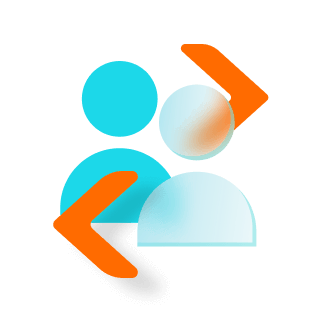Decentralized Autonomous Organization (DAO)
What Is a Decentralized Autonomous Organization (DAO)?
A Decentralized Autonomous Organization (DAO) is an entity governed by a set of computer-defined rules and blockchain-based smart contracts rather than a central authority. Unlike traditional companies, DAOs operate on open-source code and are managed collectively by the community of stakeholders. This structure ensures that all decisions are made through a decentralized, transparent process where participants can vote on proposals and changes.
The concept of DAOs emerged from the blockchain and cryptocurrency space, aiming to provide a new way of organizing and managing entities. The absence of hierarchical management allows for a more democratic and inclusive decision-making process. Members of a DAO typically hold tokens that represent their voting power, enabling them to participate in governance and influence the organization's direction. The DAO model also emphasizes transparency, as all actions and financial operations are recorded on the blockchain and visible to all stakeholders.
How DAOs Work
DAOs operate by enabling a series of smart contracts, which are self-executing contracts where the terms of the agreement can directly be written into lines of code. Those contracts define the rules of the organization, and they execute decisions according to the outcomes of votes. Voting rights in a DAO are commonly proportionate to one's token holding in the respective organization.
The decision-making process in a DAO involves proposing initiatives or changes that are put forth for voting. In practice, most proposals need to achieve some level of consensus to pass, whatever that may be, in any particular DAO. Once a decision is taken, smart contracts automatically execute the actions agreed upon. This model means that no intermediaries are involved and reduces the risk of human error or corruption.
Benefits and Risks of DAOs
Benefits
● Decentralization: DAOs eliminate the need for a central governing body, distributing power among all tokenholders. This ensures that decisions are made collectively, reflecting the interests of the entire community rather than a select few individuals.
● Transparency: All activities and financial transactions within a DAO are recorded on the blockchain, providing complete transparency and making it easy for members to track the organization's operations.
● Community Engagement: DAOs encourage participation and engagement from a diverse group of stakeholders. Members feel more connected and empowered as they have a direct say in the organization's governance and future direction.
Risks
● Security Vulnerabilities: DAOs are susceptible to hacking and exploitation due to their reliance on smart contracts. The infamous hack of "The DAO" in 2016, which resulted in significant financial losses, highlights the importance of robust security measures.
● Inefficiency: The decentralized nature of DAOs can lead to slower decision-making processes. Reaching consensus among a large number of participants can be time-consuming, and the need to educate and inform all members can further delay actions.
● Complexity: Managing a DAO requires a high level of technical expertise and understanding of blockchain technology. Without proper knowledge and resources, there is a risk of mismanagement and ineffective governance.
Examples of DAOs
The DAO
One of the earliest and most well-known examples of a DAO is simply called "The DAO." Launched in 2016 on the Ethereum blockchain, it aimed to function as a venture capital fund for the crypto and decentralized space. The DAO raised over $150 million in a crowd sale, making it one of the largest crowdfunding campaigns at the time. However, due to a vulnerability in its code, it was hacked, resulting in a loss of $50 million worth of Ether. This incident led to a hard fork in the Ethereum blockchain, creating Ethereum (ETH) and Ethereum Classic (ETC).
MakerDAO
MakerDAO is a prominent example of a successful DAO that manages the stablecoin DAI. Unlike traditional stablecoins, DAI is not backed by fiat currency but by collateralized debt positions (CDPs) on the Ethereum blockchain. MakerDAO’s governance token, MKR, allows token holders to vote on critical decisions such as protocol updates and collateralization rates. This decentralized governance model ensures that the community has a say in the stability and future of DAI.
Learn more: What are Decentralized Autonomous Organizations (DAOs)?
Related glossaries
